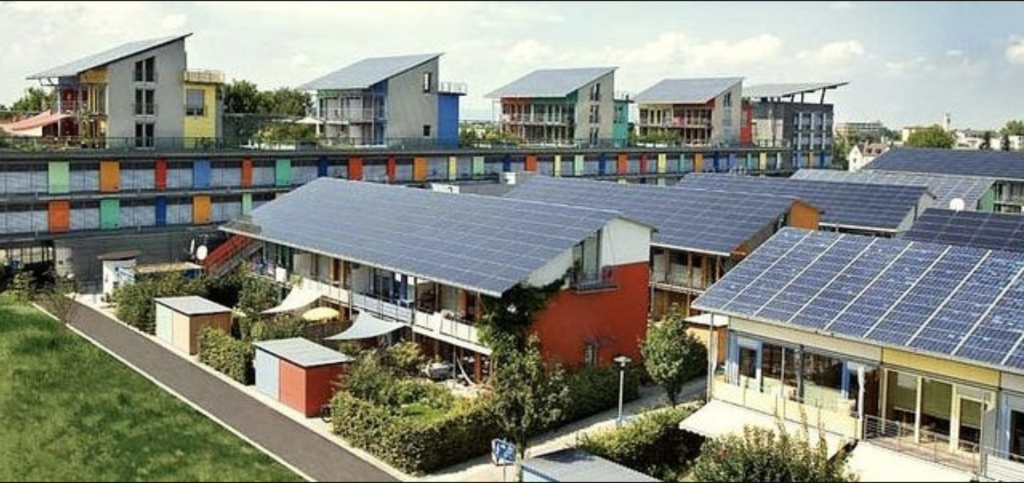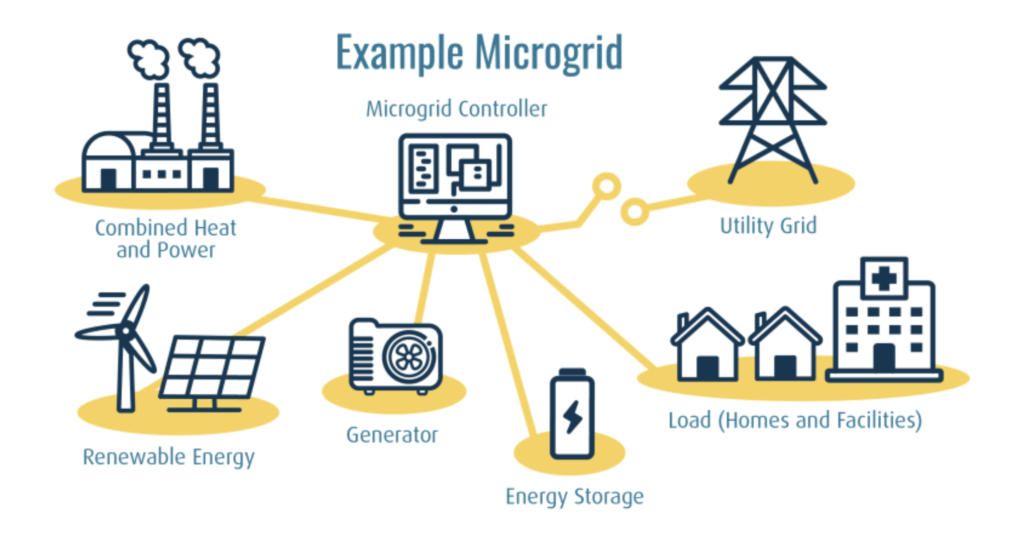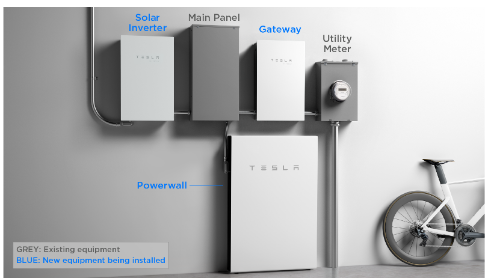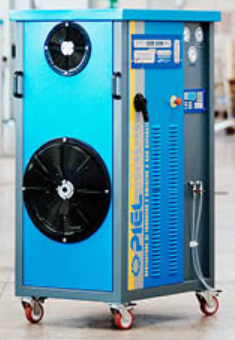
Context
This is my third blog on how to use ancient wisdom to be future-ready. In my last blog, I explored the topic of ‘tiny homes’ as a way to minimize environmental impact while supporting distributed work and put this into the context of future communities. Or put another way, to say the future is about integrated ecosystems that bring together work, social life, learning, and health care which puts well-being ahead of wealth building.
Now I turn to the most basic of support systems: energy. How is it created, stored, distributed, and ultimately consumed in a minimalist fashion?
Microgrids
The central feature (or structure) I envision for future-ready communities is called a ‘microgrid.’ From the horse’s mouth:
“A microgrid is a self-sufficient energy system that serves a discrete geographic footprint, such as a college campus, hospital complex, business center, or neighborhood.
One or more kinds of distributed energy (solar panels, wind turbines, combined heat and power, generators) produce its power within microgrids. In addition, many newer microgrids contain energy storage, typically from batteries. Some also now have electric vehicle charging stations.”

It’s important to highlight three central design features of the microgrid.
- First and foremost, it is local as it serves a defined locale. My example is probably a neighborhood of 150 residences, a central community center, and perhaps a commercial ‘maker facility.’ Incidentally, having it locally saves anywhere from 8 – 15% of the energy loss that comes with large, centralized power grids.
- Secondly, it is independent and can disconnect from larger metropolitan (and rural) power grids. As we have experienced with the increase of ‘adverse weather events, ‘ large grids are highly susceptible to cascading outages because of their inherent rigidity. See, for example, the Texas crash of 2021, which left 4.5 million homes without power for several days.
- Lastly, microgrids are intelligent. By intelligent, I mean there is a central controller which monitors (and controls) the flow of energy between generation, storage, and usage patterns automatically and in real time. The community decides what balance it wants between pricing, cleanest energy, or reliability. Certain economies of scale are achieved whenever a home is not making suboptimal decisions. (I’ll talk more later about the governance processes which facilitate these decisions.
Futures Features
As microgrids begin to emerge, several new features accelerate future readiness. This is more than a ‘weak signal.’ I’d call it a bona fide trend projected to grow to almost USD 40B by 2028 and generate 20,000MW.
Of course, a significant component will be state-of-the-art solar power and ubiquitous Electric Vehicle charging at both the residential and community level. But even more exciting are developments in sustainable power generation and storage.
Energy generation solar vertical windmills

We usually think of a windmill as horizontally oriented multi-blade propellers harnessing moving air energy. But those are large structures not suited for dense urban areas. New vertically designed windmills based on airfoil designs are 50% more efficient than traditional windmills and spin on a vertical axis. These can supplement traditional photovoltaic panels and increase grid production capacity without requiring additional space.
Storage
Concurrent with this technology development is new energy storage systems that can supplement typical battery units such as Tesla’s Powerwall.

The new technology is based on “green hydrogen,” Basically, solar-generated electricity is used to power an electrolyzer that produces hydrogen and is stored in an on-site fuel cell. When required, the hydrogen is converted back to electricity, and the only by-product is water- which can be used or recycled.
Brevity prohibits an extended technical discussion here. But the recent Inflation Reduction Act of 2022 is providing USD 30B to support the development of this type of clean energy storage equipment. Prototypes are in advanced testing now.

Individual homes
So now your tiny home is in a tiny community with 150 neighbors. Energy is locally created through solar and renewable wind power, stored in individual battery banks, and backed up with ‘green hydrogen’ electrolyzers. Theoretically, this system could generate 8KWH per home. That would be roughly (back of envelope calculation) double the community’s needs and the excess stored for emergency use or re-sale to the larger grid.
A typical tiny home consumes about 4KWH/day. This assumes the home is electric, uses heat pumps for heating and cooling, and has maximum insulation. What’s the return on investment? The average net cost for an 8KWH installation in Arizona would be approximately $12,000 USD. Given increased energy efficiencies and excess production, the payback period is six years. And this is without consideration of additional power from vertical windmills.
The bottom line is that this future-ready use of tiny homes and microgrids allows these communities to produce about three times the energy they use internally. The excess could be resold on the larger market to reduce further sunk costs or deployed to power a revenue-producing local ‘maker center,’ or the community could decide on other uses.
That brings us full circle to how this stand-alone, sustainable community will govern itself and manage these new resources. I believe the new governance model will look like a cooperative of the late 19th-century farmer’s coops in the US.
Cooperative ownership
Cooperatives are not a new idea of governance. They first appeared as a formal, recognized organization in the mid-19th century in England. There has been a recent revival in interest as large hierarchical organizations are reaching their limits to complexity to be functional. A communal purpose drives modern cooperatives.“We want to live in a society where enterprises and assets are owned and controlled by the communities that depend on them for livelihoods, sustenance, and ecological well-being.”
I suggest that these revived forms of governance will have fertile ground in future human-scale communities. These are emerging and may represent a breakthrough in community development as industrial capitalism and representative democracy wanes.
Technically, they are known as a ‘sociocracy.’ They are governed by three core principles—decision by consent, continuous feedback, and linkages across functions.

Again, the need for brevity prevents a more extended discussion. Suffice it to say this is quite similar to Stafford Beer’s conception of viable systems models, which was pioneered in real-time in Chile in the 1960s. This is a proven dynamic model that can be the basis for creating self-governance in future-ready communities. I invite the interested reader to visit my three blog series on how to prevent large-scale systems collapse at https://media.awakeningtowholeness.net/the-viable-systems-model-and-fragility/.
I’ve reached my reader time limit. I may expand on this last point at the end of this series, dependent upon reader interest. Now that I have laid the foundation with an explanation of the tiny home design and the necessary energy base, I will turn to agriculture and food production for local sustainability. Stay tuned.
Indeed, it is a wonderful life coming our way.


Leave A Comment
You must be logged in to post a comment.